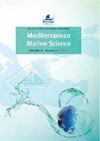Status, distribution, and threats of the last surviving fan mussel populations in Greece
IF 2.3
3区 环境科学与生态学
Q1 MARINE & FRESHWATER BIOLOGY
引用次数: 0
Abstract
Since the first confirmed records of mass mortality events (MME) in the Aegean Sea in 2018, Pinna nobilis populations in Greek seas have been decimated. To bolster recovery efforts, this study aimed to assess the status of fan mussel populations in the Aegean and Ionian seas and investigate potential recolonization through natural recruitment. From May 2022 to May 2023, 163 independent underwater visual surveys were conducted across various locations and depths along the Greek coastline. A total of 4348 P. nobilis individuals was recorded, of which 87.3% were found dead and 12.7% were alive. The sole surviving fan mussel populations were located in the semi-enclosed gulfs of Amvrakikos in the Ionian Sea and of Kalloni in the Aegean Sea, with estimated recent mortality rates (excluding potential poaching) of 7.7% and 6.3%, respectively. To track potential new recruitment, a network of larvae collectors was deployed in multiple locations. Additionally, an ocean circulation model (OCM) was developed to predict the export and fate of larvae from the surviving populations in the Marmara Sea towards the Aegean Sea. Beyond the MME, this study identified several other threats, which significantly endanger fan mussel survival. The findings of this study underscore the urgent need to implement protection measures and restoration actions to enhance the chances of P. nobilis survival and recovery in the Greek seas.希腊最后幸存的扇贝种群的现状、分布和威胁
自2018年爱琴海首次证实发生大规模死亡事件(MME)以来,希腊海域的扇贻贝(Pinna nobilis)种群数量锐减。为了促进恢复工作,本研究旨在评估爱琴海和爱奥尼亚海扇贻贝种群的状况,并调查通过自然招募重新定居的可能性。从 2022 年 5 月到 2023 年 5 月,在希腊海岸线的不同地点和深度进行了 163 次独立的水下目测调查。共记录到 4348 个 P. nobilis 个体,其中 87.3%死亡,12.7%存活。唯一幸存的扇贝种群位于爱奥尼亚海的 Amvrakikos 和爱琴海的 Kalloni 半封闭海湾,估计近期死亡率(不包括潜在的偷猎)分别为 7.7% 和 6.3%。为了跟踪潜在的新招募幼体,在多个地点部署了幼体采集网络。此外,还开发了一个海洋环流模型(OCM),以预测幼体从马尔马拉海的幸存种群向爱琴海的输出和命运。除马尔马拉海贻贝外,本研究还发现了其他几种严重威胁扇贝生存的威胁。这项研究的结果突出表明,迫切需要实施保护措施和恢复行动,以增加扇贝在希腊海域生存和恢复的机会。
本文章由计算机程序翻译,如有差异,请以英文原文为准。
求助全文
约1分钟内获得全文
求助全文
来源期刊

Mediterranean Marine Science
MARINE & FRESHWATER BIOLOGY-
CiteScore
5.20
自引率
17.90%
发文量
34
审稿时长
>12 weeks
期刊介绍:
The journal Mediterranean Marine Science (MMS), published by the Hellenic Centre for Marine Research (HCMR), issues three volumes annually. The journal welcomes original research articles, short communications, New Mediterranean Biodiversity records, extended reviews, comments, and Theme sections in all fields of Oceanography, Marine Biology, Marine Conservation, Fisheries and Aquaculture in the Mediterranean area and the adjacent regions. All content is peer reviewed.
 求助内容:
求助内容: 应助结果提醒方式:
应助结果提醒方式:


